Marie-Antoinette, Queen of Fashion
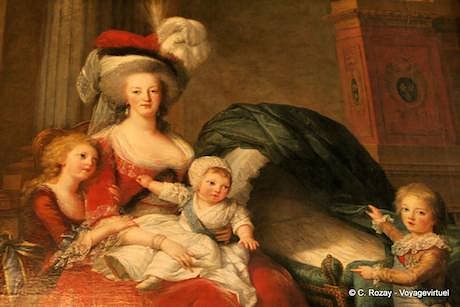
Tue 22 Sep 2015
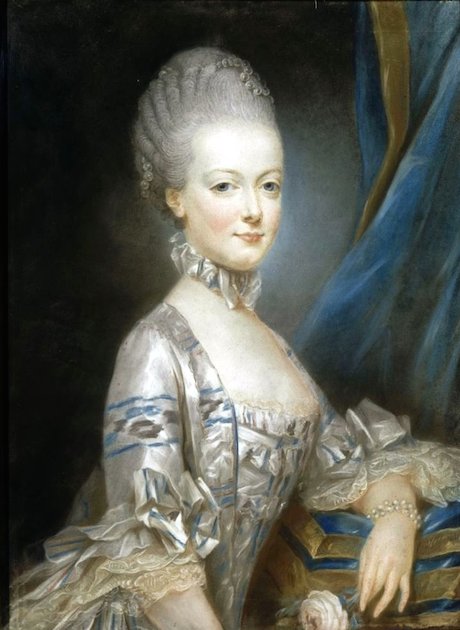
Marie as painted by Joseph Ducreux when she was only 13.
Marie-Antoinette is the most controversial woman in French history. She had a
complex personality. She was a multi-faceted woman; frivolous, a big spender
and sentimental, but also a modern woman who wanted to preserve her
intimacy and her freedom. Marie-Antoinette was only fifteen years old when she
arrived from Vienna to Versailles to marry Louis, who would be the future
Louis XVI.
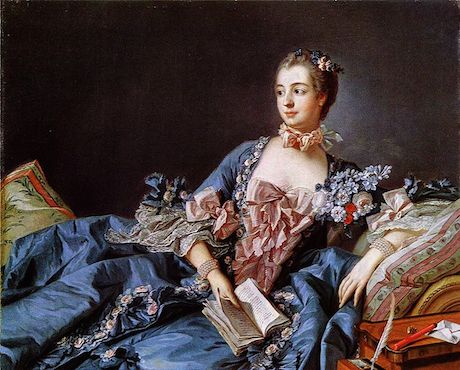
Madame Pompadour, a courtesan at Versailles
Three thousand courtesans were living in the Castle of Versailles, the most rigid
and cruel court of Europe. Marie-Antoinette was just 19 years old when she
became the Queen of France. She’s quickly disappointed by a boring husband
whose only passion is collecting locks. Louis XVI is shy and clumsy. It takes
seven years for the two of them to create an heir. Marie laid in wait, and remained a virgin for those seven years. All that time she had to bear the humiliation of Versailles and all of France. The courtesans of Versailles made fun of her and her impotent
husband who was not able to give a future king to the French kingdom.
Then, there were the awful rumors. People whispered that Marie-Antoinette might be a lesbian and that among her many lovers there was her best friend the beautiful Contesse de Polignac, at the time extremely scandalous.
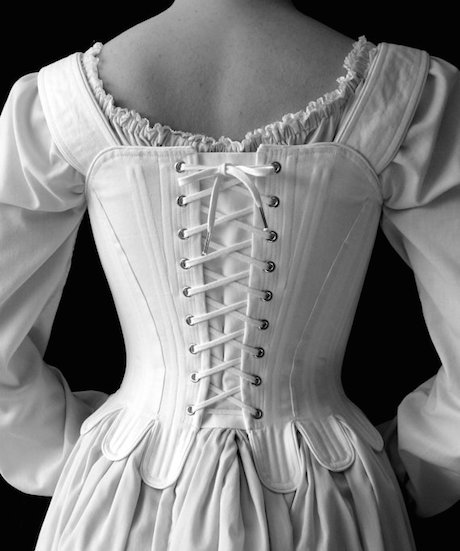
Marie-Antoinette did not care about the rumors . She was a rebel from the start. When she first arrived at the court she refused to wear her corset, a torturous instrument designed to cinch the woman’s waist making it thinner and the breasts larger. She rebelled against the strict rules of Versailles. She was not allowed to get dressed by herself. After waking the queen was dressed in front of the most important ladies of the court. She had to wait, naked and shivering, whilst fifteen countesses who awaited her decided who will have the privilege to give a shirt to the queen.
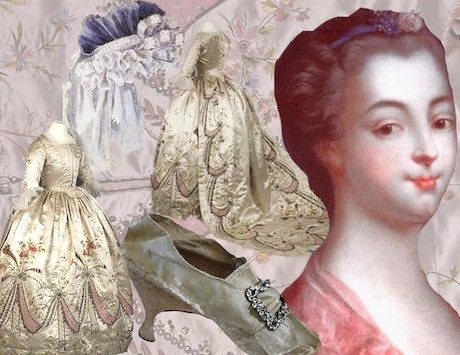
Rose Bertin and her creations
Eventually Marie-Antoinette suppressed this humiliating ritual which resulted in angry aristocrats. She wasn’t allowed to voice political opinions, so she took refuge in the private sphere and decided to become the fashion icon of the court. She had no intimate relationships, one could say that she compensated for her lack of love by
becoming a shopping addict. Each morning she saw her dressmaker, Rose Bertin, to choose what to wear to keep the title of the most beautiful woman in France. Before Chanel and Dior, there was Rose Bertin, a commoner and humble dressmaker.
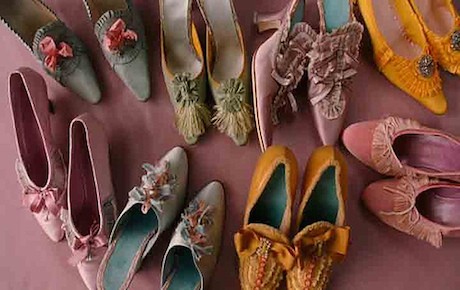
Marie-Antoinette threw out all the courtesans from Versailles and replaced them with this simple yet talented dressmaker. Together they choose lightweight silks, brocade, satins, feathers, ribbons, gauze and pearls, creating the most sumptuous of dresses. Rose Bertin was described as the “Fashion Minister” by the Queen. Together they invented Haute Couture. Marie-Antoinette truly reigned when it came to fashion at court. She made an enormous sensation each time she appeared, and Rose Bertin did not come cheap .
Madame Bertin became wealthy thanks to her famous VIP client and in turn opened the most chic fashion shop in Europe «Au Grand Moghol», in 1770 at 113 rue du faubourg St. Honoré moving in 17883 to 13 rue de Richelieu in Paris. The name «Grand Moghol» was inspired by the exotic fashion of Turkey and Persia which was popular at the court of Versailles.

To complete the magnificent dresses for the Queen, her hair dresser Leonard,
designed a a kind-of hair scaffold. Her hairstyles were often one meter tall, made
by a “pouf” (a cushion inflated with horse hair) tucked inside. There might be a
boat or an English garden fashioned on top of her head. All the fashion victims
of Versailles wanted to look like her and sometimes lost everything financially trying to copy her style. Like the Queen, the aristocrats couldn’t pass through the doors of Versailles because their dresses were too voluminous. When they traveled their hairstyles
were so big they had to pass their head through the window of their horse
coaches.
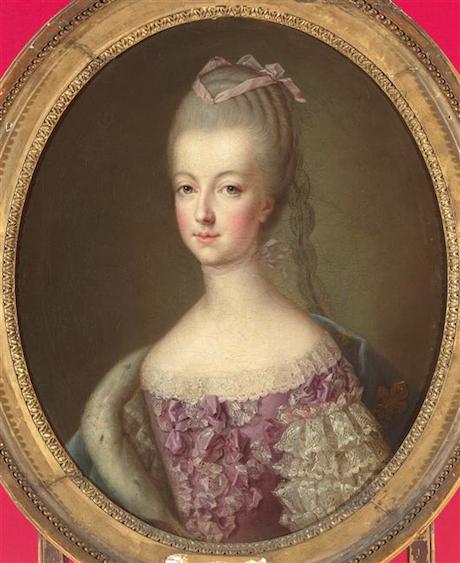
Marie-Antoinette was criticized for her expensive and extravagant taste and for owning simply too many outfits. She continues to ignore her critics and shops in
a compulsory way for luxurious dresses, cost prohibitive jewels and shoes
inlaid with precious stones. Contrarily, Enlightenment philosophers from the 18th century celebrated simplicity with the new fashion motto being “let’s go back to nature!
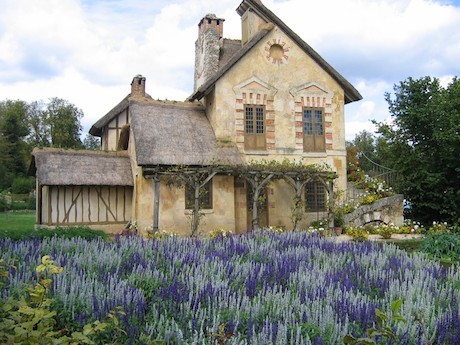
In response Marie built a fairy-tale village just to “play” in at Versailles, while throughout France the peasants were starving in their real villages. In 1780 many people died of starvation while Marie-Antoinette bought 170 dresses in one year. In 1783 homeless in Paris number 500,000 yet in the same year Marie-Antoinette bought 200 pairs of shoes. The French began calling her “Madame Déficit ».
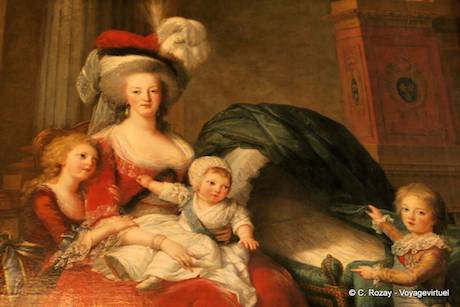
With her birth of first child, in 1778 Marie-Antoinette also grew more mature. She was now no longer a teenager. She gave up dresses with big hoops for English rural dresses which were simpler and more comfortable. She’s enjoys walks in her rose garden with a simple light, white dress made of muslin, and a straw hat on her head. This style of dress becomes so popular that it will be called “the Queen’s Shirt” This dress is shown in the famous painting by Elisabeth Vigier-Lebrun from 1783, which created a big scandal because it was considered indecent for a Queen to wear a maid’s dress. So urgently the painting is replaced by The Portrait at the Rose which depicts the queen wearing a more elaborate outfit “made in France”.
During the French Revolution , even her enemies were forced to admit that
Marie-Antoinette remained extremely dignified, defending her children
and her husband with courage. Rose Bertin her dressmaker was not ungrateful.
Ms. Bertin delivered underwear and dresses for free to her famous client
while she was in jail during the Revolution. Rose visited Marie-Antoinette at the Conciergerie and offered her a lace cap.
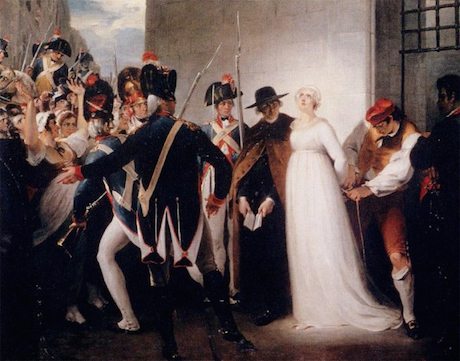
The 16th of October 1793 was the last day of her life. She was 37 years old
when she was killed via guillotine. She wore Rose’s lace cap given when the axe went down on the place de la Concorde. Before dying she wrote a very moving letter from a mother to her children. She accidentally stepped on the execution’s foot and apologized to her killer.
Her last words were «Excuse me Sir, I did not mean to do it»
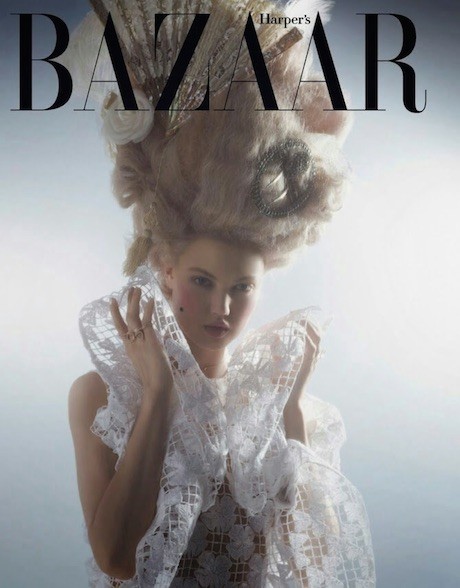
Marie-Antoinette had a huge influence on fashion all over Europe in the XVIII
century. Even now, the most famous couturiers like John Galliano and Karl Lagerfeld, continue to take inspiration from her baroque style. This fascinating woman is still being talked about thanks to her unique allure.
Note: Edith Werb is a French lawyer residing in Paris. She conducts historical walks in Paris and salons focusing on women throughout history in France. http://edithsparis.com/WP/